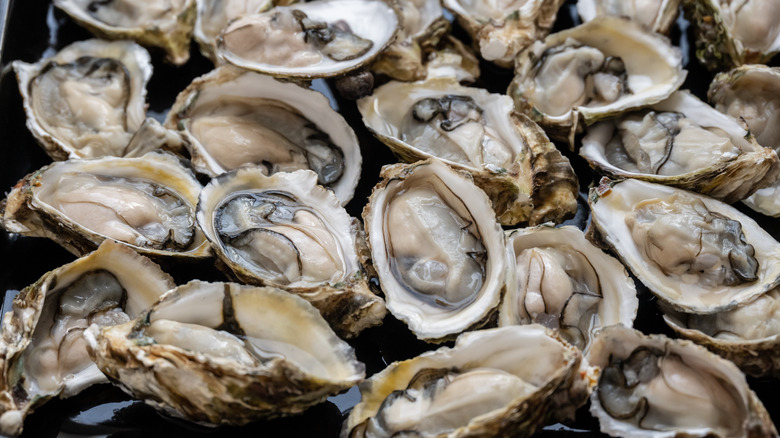Should You Really Follow The 'R' Month Rule For Eating Oysters?
We may receive a commission on purchases made from links.
For many, the oyster is a top seafood item — and, if you haven't given it a shot yet, you should know that it's on our list of 14 seafoods you must try before you die. When it comes to oysters, you may have heard of the "R" month rule: that you should only eat oysters in months that contain the letter, "R," in them (as in September through April) because that's when they're seasonal. To find out if there's any truth to this rule, Daily Meal spoke with an expert: chef Ari Kolender, partner at Found Oyster as well as Queen's Raw Bar & Grill, and author of How to Cook the Finest Things in the Sea.
In short, Kolender confirmed that the rule "is not true today." He explains, "Originally, this advice came from a time before good refrigeration, cold chain shipping, and strict regulations. Eating raw oysters in warmer months (May through August) poses a higher risk of bacteria growth. Oysters typically spawn in summer as well which can make their texture softer and less desirable."
Further, the development of good refrigeration and cold chain shipping are not the only inventions that have changed the world of oysters. In fact, one development in particular has made harvesting in the summertime much easier.
What else to know about how oysters are harvested
The harvesting of oysters now looks a lot different from when the "R" rule was relevant, in huge part due to what is known as the triploid oyster. Ari Kolender says, "Many oysters are now grown in carefully managed environments, and some are bred to be sterile, meaning they don't spawn and stay firm year-round." This is the triploid oyster, which has three chromosome sets instead of the natural two and has been bred to be infertile. As a result, the triploid grows faster (and bigger) than a natural oyster and isn't affected by summertime spawning.
Additionally, Kolender notes that where oysters are harvested can make a difference in their quality due to elements such as water temperature, salinity, and currents — all of which can impact both taste and texture. Kolender says, "In states with warmer summer waters, such as my hometown in South Carolina, they close down oyster harvesting when temperatures reach unsafe levels."
With that in mind, it's a good idea to ask questions about how the oysters were sourced before ordering them at a restaurant. In fact, this is another reason to be careful if a restaurant is offering an oyster deal – it may be trying to get rid of old oysters and, if it's resorting to that, it may not have the best sourcing practices to begin with. However, if you go to a restaurant that is known for its oysters as a speciality, then you should be good to go — and can simply focus on what to know before attempting to eat oysters at a fancy restaurant.

